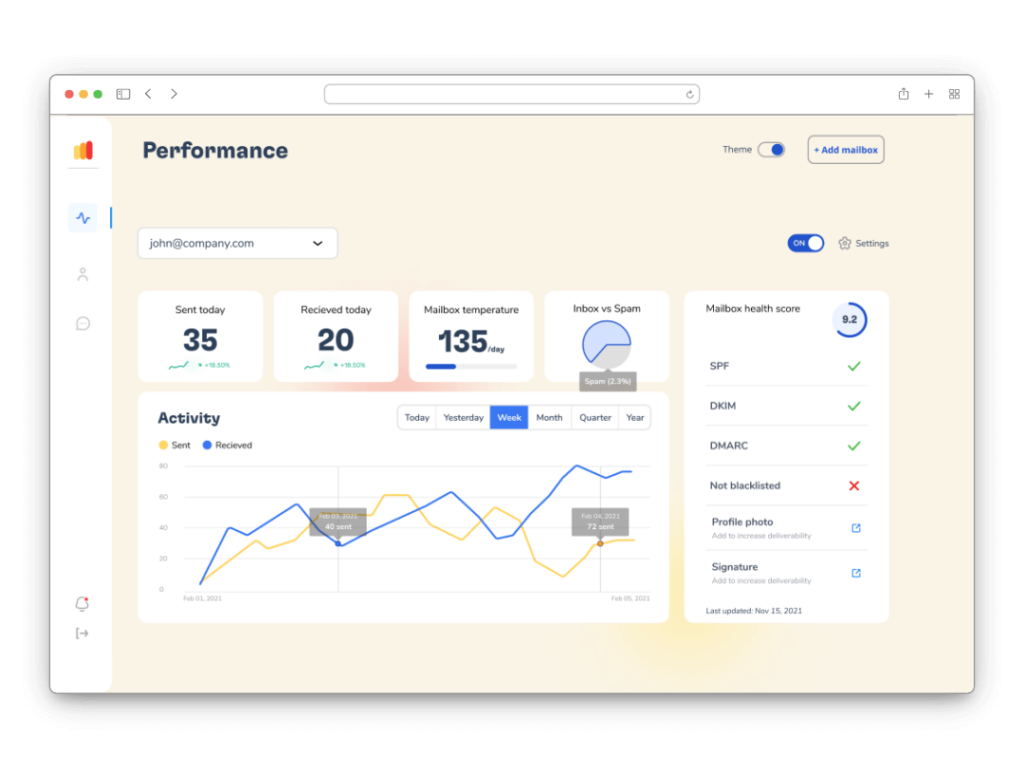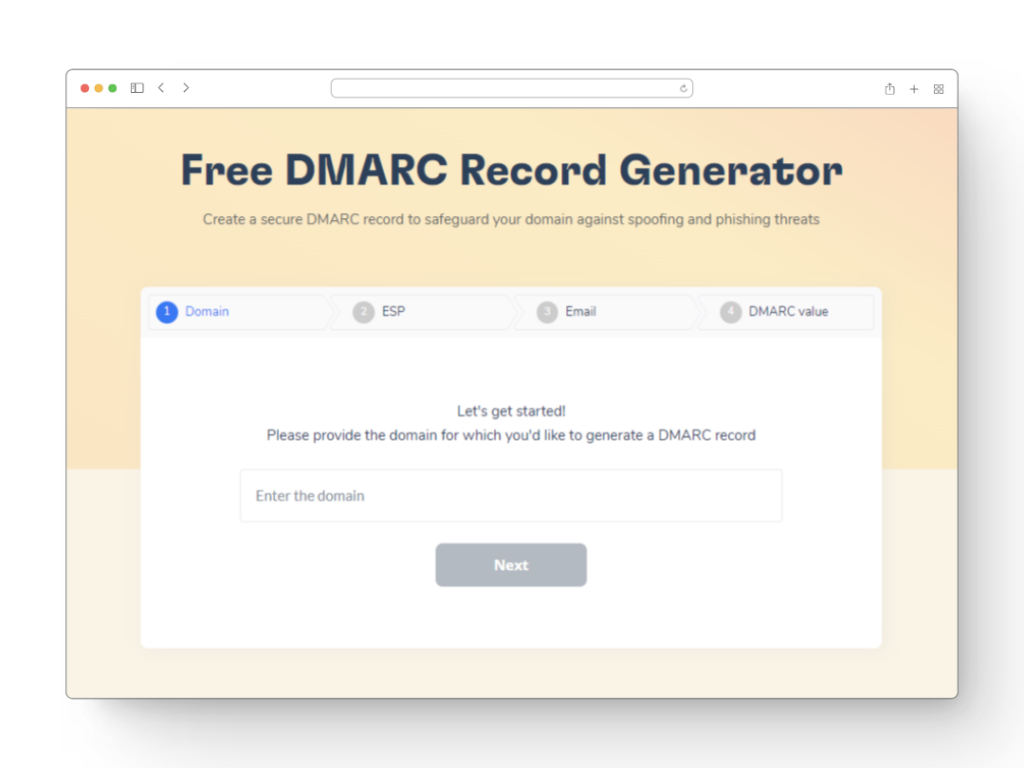Ever sent an email and then found it disappeared into thin air, never to be seen by the person you meant to send it to? I find it to be a frustrating experience. Success of email marketing initiatives is mostly dependent on email deliverability, the unseen factor determining where your emails land. Your marketing efforts can be far more successful if you make sure your message lands in the inbox of the recipient in the fast-paced world of digital communication. Think about it: email marketing returns on investment (ROI) of $36 for every $1 invested, yet a large percentage of emails are never delivered to the right people.
Deliverability is a sophisticated synthesis of sender reputation, content relevancy, and careful technical setup; it goes beyond simply avoiding spam filters. We’ll explore the complexities of email deliverability and show why, in the current digital marketing environment, when every click and open matters, understanding this vital element is essential.
About SendGrid

Reputable for its cloud-based customer communication platform that lets marketers and developers create, segment, test, and distribute emails, SendGrid was founded in 2009. Because of its powerful technology, which handles a large number of emails, SendGrid is an essential tool for companies trying to keep up high levels of email customer interaction.
SendGrid has demonstrated notable expansion and innovation since its founding as a part of the Techstars accelerator program. With the addition of push notifications and SMS, the company—which Twilio paid $2 billion to purchase in 2019—has improved its multi-channel communication capabilities. With this acquisition, SendGrid’s capabilities and reach inside the tech sector have expanded since it is now better integrated into the larger range of communication solutions offered by Twilio.
Especially praised for its intuitive design, SendGrid’s platform enables users of all skill levels to efficiently manage their email campaigns. Advanced analytics and a drag-and-drop email template builder enable customers to enhance interaction metrics and optimise their email campaigns.
Understanding email deliverability
Frequently just called “deliverability,” the email deliverability rate is the proportion of emails that make it into the recipient’s inbox. Knowing how many emails got past spam filters and weren’t bounced back by the recipient’s server makes this statistic essential for assessing the effectiveness of an email campaign.
Relevance of Deliverability to Marketers
✅ Impact on Campaign Success. Contacting both new and current clients is the main objective of email marketing. Whatever the quality of the content, it loses its potential impact if emails do not get to the inbox. High deliverability is therefore a direct link between email marketing campaign success overall.
✅ Reputation management is a function of email service providers (ESPs) and internet service providers (ISPs) monitoring senders’ deliverability rates. Even more emails are flagged as spam when a sender’s reputation is damaged by a persistently low delivery rate. Long-term marketing success depends critically on keeping up a positive sender reputation.
✅ROI Impact. Of all the digital marketing platforms, email marketing is renowned for offering one of the best returns on investment. Each email that never makes it into an inbox is a chance lost to generate income and increase return on investment. As a result, maximizing deliverability rates pays.
✅ Customer Retention and Engagement. Deliverability has an impact on how regularly your audience receives your content, and engagement follows. Continual, dependable email correspondence can improve client loyalty and retention.
Deliverability, then, is about optimizing the effectiveness of every email sent, so ensuring that marketing efforts are not squandered and that every message has the chance to engage its intended audience, not only about avoiding the spam folder.
Measuring deliverability
How SendGrid Measures Deliverability Rates
SendGrid utilizes a feature called “Deliverability Insights” to monitor and enhance email deliverability. This tool provides users with a dashboard where they can track essential metrics like volume trends, open rates, spam complaint rates, and other key performance indicators. It also segments these metrics by mailbox provider, helping users pinpoint specific areas needing attention. This granular data helps in understanding why emails might not be reaching inboxes and provides actionable insights to improve email deliverability.
Common Metrics Used in the Industry
- The Inbox Placement Rate (IPR) gauges how many emails end up in the inboxes of recipients rather than in spam folders or are misplaced. Messages that are delivered to the inbox alone—those that wind up in garbage or spam—are not included in the calculation of IPR.
- Open Rate. To determine how engaging an email is to recipients, one calculates the proportion of opened emails. It’s noteworthy, although, that elements like ISP picture blocking or privacy tools like Apple’s Mail Privacy Protection might have an impact on how accurate open rates are.
- The number of messages reported as spam divided by all messages sent yields the spam complaint rate. Deliverability generally and a sender’s reputation may suffer from a high spam complaint rate.
- List Growth Rate. This statistic gauges the number of new subscribers added to an email list in relation to unsubscribers, therefore aiding in its health monitoring. Good list growth rate suggests engaged audience and improves deliverability.
Common issues affecting deliverability
General Factors Impacting Deliverability
- Poor Sender Reputation. This might arise from high bounce rates, frequent spam complaints, or sending emails to spam traps. ISPs monitor sender activities, and a poor reputation can lead to emails being filtered out as spam.
- Lack of Authentication Protocols. Not adopting DKIM (DomainKeys Identified Mail), SPF (Sender Policy Framework), and DMARC (Domain-based Message Authentication, Reporting, and Conformance) might make it difficult for ISPs to authenticate the legitimacy of the emails, resulting to delivery challenges.
- Content Quality. Emails containing spammy terms, numerous links, or poor HTML code can activate spam filters. Additionally, excessive attachments or false topic lines may also effect deliverability negatively.
- Engagement Rates. Low engagement rates, such as opens and clicks, can signal to ISPs that receivers are not interested in the content, influencing future deliverability to those users.
- List Hygiene: Inaccurate or outdated email lists, including addresses that are no longer active or have become spam traps, can significantly impair deliverability. Keep your sender score high by routinely cleansing your list.
Specific Issues for SendGrid Users
SendGrid users might encounter specific issues that affect their email deliverability, including:
Integration Errors. Improper integration of SendGrid’s API or misconfigured email settings can lead to failed email deliveries. Ensuring correct setup according to SendGrid’s guidelines is essential.
Volume Fluctuations. Sudden spikes in email volume can alert ISPs and lead to temporary blocking of outgoing emails. It’s important for SendGrid users to gradually scale their sending volumes to avoid this issue.
IP Warm-up. New SendGrid accounts or new dedicated IPs require a warm-up phase to build a sending reputation. During this period, sending too many emails too quickly can lead to poor deliverability. Use tools like Warmy.io to automatically warming up your email.
Feedback Loop Issues. Not managing responses from SendGrid’s feedback loop effectively can lead to continued sending to recipients who have marked emails as spam, thereby hurting the sender’s reputation.
Causes of Significant Drops in Deliverability
Email deliverability declines suddenly can be ascribed to a number of important reasons, each of which affects email campaign effectiveness.
✔️Recipients’ increasing complaints about spam can harm a sender’s reputation and cause ISPs to filter more carefully.
✔️Being blacklisted is another serious problem that frequently arises from sending to spam traps or from other actions that make a sender appear unreliable.
✔️Additionally preventing emails from reaching their intended inboxes are technical concerns include malfunctions in email authentication protocols (SPF, DKIM, DMARC) or setups of email servers.
✔️Unexpectedly setting off spam filters can also result from changes in ISP regulations or questionable email content.
Avoiding these problems and guaranteeing steady delivery need upholding excellent email practices, such as strong list hygiene, constant engagement levels, and following current ISP recommendations.
Reliability and accuracy of email deliverability metrics
While email deliverability indicators are crucial for evaluating the success of email campaigns, a number of variables might cause them to differ greatly in accuracy.
Accuracy of Deliverability Metrics
Because they represent observable, direct interactions between email servers, metrics such as delivery, bounce, and spam complaint rates are often trustworthy. These measurements offer concrete information about whether emails are being forwarded, rejected, or classified as spam. To interpret these measures, nevertheless, one must be well aware of the conditions under which they are measured. If most of the emails are ending up in spam folders rather than the inbox, for example, a low bounce rate might not be a sign of health.
Limitations of Open Rates
Because of developments in technology and privacy laws, open rates—a once-popular indicator of recipient engagement—have lost some of their reliability. Open rates’ main problem is that they are reliant on a tracking pixel included into emails. Opening the email and allowing the pixel to load qualifies as a “open.” Some email programs, meanwhile, block these pixels, and privacy settings like Apple’s Mail Privacy Protection now conceal whether a user really opened an email.
Moreover, automated processes like email scanning or filtering tools can trigger the loading of the pixel without any interaction from the recipient, leading to inflated open rates. This makes open rates a less accurate indicator of true engagement. To combat these limitations, marketers are encouraged to focus more on metrics that represent direct user actions, such as click-through rates, which are less susceptible to such distortions.
Enhancing Metric Reliability
To improve the reliability of email metrics, it’s important for marketers to:
- Utilize a combination of metrics for a more comprehensive view of email performance.
- Focus on metrics that reflect direct user interactions.
- Regularly update and calibrate tools and approaches in response to changes in email technology and user privacy preferences.
Technical checks and configuration
Increasing email deliverability is a combination of technical setups and best practices that guarantee ISPs and email clients will view your emails as acceptable and desirable. Here are several critical technical components to check and set up, with an emphasis on SendGrid user settings.
Related –
Essential Technical Aspects to Review
- Enable email authentication by implementing records for SPF (Sender Policy Framework), DKIM (DomainKeys Identified Mail), and DMARC (Domain-based Message Authentication, Reporting & Conformance). By helping to confirm that the sender is allowed to send email on behalf of a domain, these guidelines greatly lower the chance that your emails will be flagged as spam.
- Using a dedicated IP address is something to think about if you’re sending a lot of emails. This spares you from sharing an IP with other SendGrid users whose activities could compromise your deliverability and lets you establish a sender reputation based only on your own email activity.
- Inactive, invalid, or unresponsive email addresses should be routinely removed from lists. This lowers bounce rates and helps keep a healthy engagement rate, two important things ISPs look at when evaluating your sender reputation.
- Set Email Headers Correctly Make that the “From,” “Reply-To,” and “Return-Path” headers in your emails are correct and consistent. Disparities in these can set off spam filters.
- Steer clear of too salesy language, too many links, or spam-trigger terms in your email content. Be sure your HTML is error- and clean-free as well.
Related – The benefits of SendGrid SPF Record and SendGrid DKIM Record
Configuration Advice for SendGrid
- Setup SPF and DKIM records in SendGrid by going to the SendGrid dashboard. Email authentication depends on these entries, which SendGrid offers a wizard to help you create in your DNS settings.
- Track Deliverability Performance. Track important statistics including open and bounce rates as well as spam reports using SendGrid’s “Deliverability Insights” service. Actionable information from this dashboard can help you improve the performance of your efforts.
- Use SendGrid’s Event Webhook to get instantaneous alerts on things like opens, clicks, and bounces. Including these alerts into your systems will enable you to react to delivery problems fast.
- Send pertinent material to specific audience segments by using SendGrid’s segmentation tools. In addition to increasing interaction, this lowers the possibility that people may designate your emails as spam since they are irrelevant.
Improving email deliverability with Warmy.io

SendGrid users looking to maximise their email campaigns will find Warmy.io to be a very useful specialist solution that improves email deliverability. Warmy.io helps make sure emails get into the inboxes of their intended recipients by resolving typical deliverability problems, which raises overall engagement and the efficacy of email marketing campaigns. SendGrid customers that handle a lot of email and want to keep high deliverability rates in the face of strict ISP filters and rules will find this especially helpful.
Free features of Warmy.io
Free Email Deliverability Test
This tool lets users find out how likely your emails will be received in the inboxes of the recipients. It assesses many facets of your email setup and content and offers suggestions and analysis for enhancement.
SPF and DMARC Free Record Generator

Free tools from Warmy.io allow you to create SPF (Sender Policy Framework) and DMARC (Domain-based Message Authentication, Reporting, and Conformance) records. These are essential to confirming to ISPs that your emails are valid and to authenticate your email sources, which greatly reduces the possibility that your emails will be reported as spam.
Email Template Checker

Warmy.io’s Email Template Checker scans your email templates for typical problems that could set off spam filters. It guarantees that your HTML is clear of components known to reduce deliverability and is clean and responsive on many devices.
SendGrid users can much improve the dependability and efficacy of their email marketing campaigns by using these features. Including Warmy.io into their email strategy not only helps to find and fix deliverability problems but also offers continuous insights to maintain the best possible performance from their efforts. Visit Warmy.io for further details.
Conclusion
We discussed common deliverability issues such as spam complaints and blacklisting, providing strategies to mitigate these challenges. Additionally, we highlighted the benefits of integrating tools like Warmy.io for SendGrid users. Warmy.io enhances deliverability through features like SPF and DMARC record generation, deliverability testing, and email template checks, helping to identify and resolve potential issues.
In conclusion, maintaining high email deliverability requires a combination of strong technical foundations, regular monitoring, and the integration of advanced tools. Warmy.io supports this endeavor with a 7-day free trial, offering an excellent opportunity for SendGrid users to experiment with and experience the benefits of enhanced deliverability firsthand.
📜 Related article:
FAQ
How does SendGrid help improve email deliverability?
Through strong infrastructure that includes dedicated IP addresses, email authentication (SPF, DKIM, and DMARC), and proactive monitoring of sending procedures to preserve a positive sender reputation, SendGrid enhances deliverability. SendGrid offers analytics to monitor delivery rates and interaction as well.
What are common reasons for deliverability issues in SendGrid?
Frequent problems include sending to invalid email addresses (which bounces), high spam complaint rates, inadequate list management, improper email authentication, and material that sets off spam filters.
How can I check if my emails are being delivered to the inbox in SendGrid?
SendGrid provides "Deliverability Insights" and other tools that give comprehensive email performance statistics including open rates, delivery rates, and spam reports. These resources enable you to determine how many of your emails are getting into the inbox and what problems could be affecting deliverability.
Does SendGrid support integration with third-party deliverability tools?
SendGrid can, in fact, interface with outside services that improve inbox placement, give further information about deliverability problems, and provide services like spam trap detection and list cleansing.
Can I use Warmy.io with SendGrid to test deliverability?
Unquestionably. Warmy.io adds to SendGrid by offering more features including email template checks, deliverability testing, and generators of SPF and DMARC record. These tools make sure your emails land in the inbox by helping to spot and fix possible deliverability problems.











